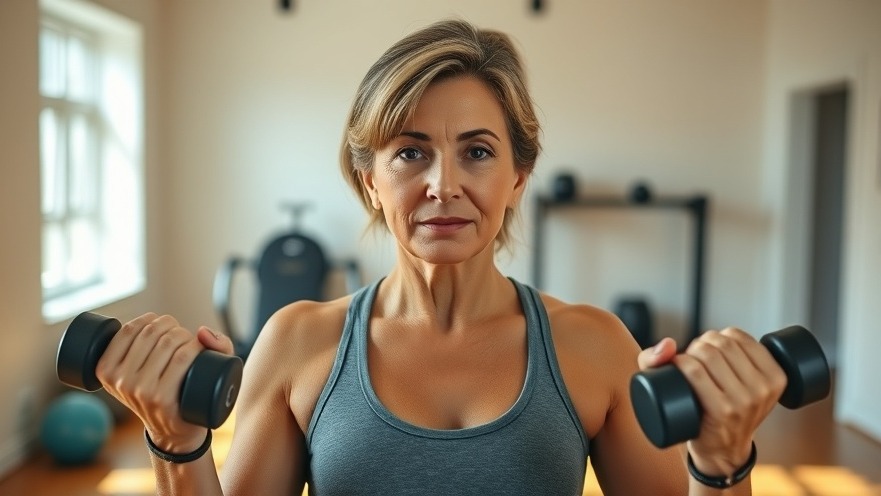
Empower Yourself with Strength Training
Today's fast-paced world requires us to take proactive steps toward our health, and strength training is a vital piece of that puzzle. The recent video titled Back and Biceps Workout at Home - With Dumbbells emphasizes the importance of incorporating strength exercises into our routine, especially for women over 40. With simple dumbbell workouts, you can effectively enhance your physical well-being while feeling confident and empowered.
In Back and Biceps Workout at Home - With Dumbbells, the focus is on effective upper-body workouts suitable for everyone. We’re breaking down key insights from this video to enhance your understanding and application of strength training.
The Importance of Resistance Training for Women
Studies show that women can greatly benefit from resistance training, especially as they age. Strength training bolsters muscle mass, which tends to decrease with age. Start with lighter dumbbells, as advised in the video, such as 5-10lbs, and gradually challenge yourself as you build strength. Engaging in this exercise at a minimum of twice a week can drastically improve your overall health, reducing the risk of osteoporosis, enhancing muscle function, and elevating mood through the release of endorphins.
Creating a Routine that Works for You
The beauty of the video lies in its simplicity and accessibility. You don’t need a fancy gym to achieve results; just a set of dumbbells and a little space at home. Aim to combine different workouts—like adding in shoulder and tricep sessions alongside the biceps and back routines. This stacked approach not only keeps your workouts fresh and exciting but also ensures holistic body strength.
A Step-by-Step Guide to Getting Started
Here’s how you can ease into your strength training journey based on the video:
Warm-Up: Begin with a simple walk-in place to increase your heart rate and prepare your muscles for lifting.
Select Your Weights: Choose a light to medium set of dumbbells—or whatever you have available. Light weights help you master your form.
Core Exercises: Focus on core stability as you perform exercises like bicep curls and rows. Proper posture is vital.
Progressive Overload: Gradually increase the weights as you find the movements easier. This is key to building strength!
Cool Down: After your workout, take a few minutes to stretch and relax your muscles.
Overcoming Common Misconceptions
Many might think that lifting weights will bulk you up or that it’s only for those at the gym. This couldn’t be further from the truth! Strength training, particularly with dumbbells at home, offers flexibility, and control while enhancing your body tone. It’s about feeling strong and capable—regardless of body type or fitness levels.
The Road to Progress: Tracking Changes
Over time, celebrate your achievements, no matter how small. Maybe you start out with a 5lb weight and work your way up to 15lbs; that evolution is your progress and should be acknowledged. Not only that, but keep a workout diary! Documenting your exercises helps keep you accountable and motivates you to stay on track.
Finding Community and Support
Connecting with others on a similar journey is invaluable. Look for exercise groups or community classes focusing on strength training. Shared experiences make the workouts more enjoyable and provide encouragement during challenging days. Involving your friends in your journey can also make exercising something to look forward to.
Conclusion: Take the First Step!
Don't let age be a deterrent to building strength and vitality. As you engage in these workouts shown in the video, remember that your health is your most valuable asset. Strength training helps not only in physical fitness but also contributes to mental well-being. Today, grab your dumbbells, start your journey, and experience the transformative power of strength training!
 Add Row
Add Row 

 Add Element
Add Element 


Write A Comment